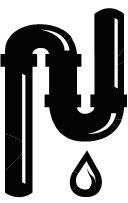Where does the water go?
Every municipal water system leaks. Billions of gallons of water are lost every day from U.S. drinking water systems.
The city of Joliet, Illinois recently raised its water rates but was also forced to enter into a serious discussion about where 1/3 of its water goes. A full 33 percent of the water produced by the city for sale is not being sold and for the most part is unaccounted for. What’s worse, the amount or “lost” water is increasing every year.
“Acceptable” water loss for cities is around 8%. Leaks account for most of this. A certain amount of leakage is inevitable, and it’s hard to find leaks in pipes that are 10 feet underground. Big leaks, like main breaks, can be estimated and thus “accounted for.” Also, the city can keep estimated records on water used for firefighting and street cleaning.
Inaccurate meters also account for a lot of the lost water. Meters, especially old ones, sometimes underestimate usage and the water that doesn’t get billed makes up part of the city’s lost water total. It isn’t unusual for some customers to get free water simply because of glitches in the billing system. What they get is, to the city, “lost” water.
Finding lost water is much harder than one might think. The city of Joliet hired a consulting firm that took a hard look and concluded that it did not know where the unbilled water was going. What they did conclude, however, was that the city was spending way too little to maintain it’s water lines.
The city of Joliet is not an extreme case. It is not uncommon to hear of water utilities that only bill for 50% or less of the water that they treat and pump to distribution. Studies have estimated that as much as 5.9 billion gallons per day of water is lost to leakage, poor accounting and other unbilled consumption in the United States. This is more than enough water to supply the ten largest cities of the United States.





